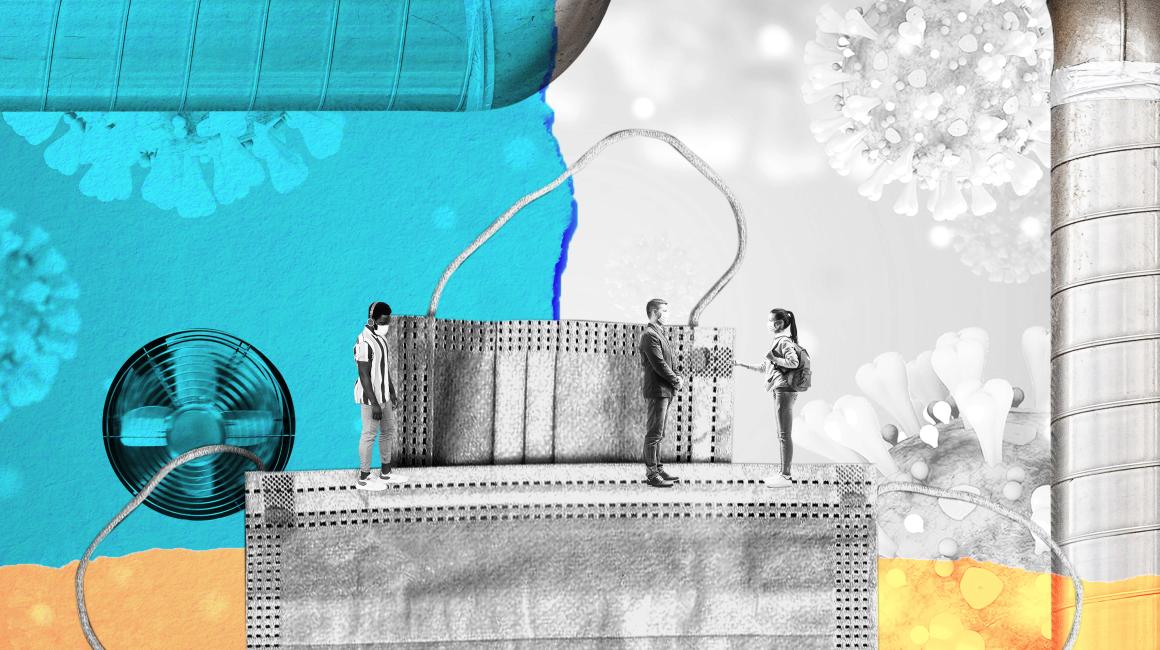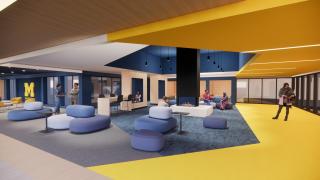
Beyond engaging in the pastime of griping about the thermostat setting, you probably never used to think much about your office HVAC system. Now, with more faculty and staff returning to work and teach on campus this fall, those systems that move air around our buildings suddenly have our attention. In fact, whether the campus’ HVAC systems are up to the challenge of keeping our office environments “safe” is one of the most asked questions about our return to campus planning. So we wanted to take a minute and break down the key issues, including some of the big steps our facilities teams have taken to make the indoor environment safer.
While indoors, your most important layers of protection have nothing to do with HVAC
Before we get into the weeds of MERV filter ratings and how many “air exchanges per hour” is enough, it’s worth pointing out that HVAC systems aren’t our most powerful tools to fight transmission of coronavirus. The combination of social distancing, mask wearing and widespread vaccination is far more relevant to reducing transmission, namely because coronavirus spreads mostly through close personal contact. So if you’re in the office and you and your colleagues are all masked and socially distanced, you’ve already greatly reduced your risk. Get a vaccination and your safety outlook is even better, as the CDC is now saying it’s OK for fully vaccinated folks to gather indoors as long as everyone is wearing a mask and social distancing. Now, imagine this all happening in an environment where case numbers are way down from where they are today, which is expected once vaccination rates hit a certain threshold. (At the current pace of vaccination, we’re on track to have every adult in the U.S. vaccinated by June 26.) Taken together, that starts to make returning to campus look much more comfortable. This isn’t to say that HVAC systems can’t still play a role, but in the context of all the tools we have to fight transmission, they’re more of a supplemental layer of protection.
Facilities teams have improved ventilation and filtration in every campus building
That said, every layer of protection makes a difference, and campus facilities teams have taken numerous steps to improve indoor air safety in campus buildings. As you probably know, outdoor air can be a big help when it comes to safety, and the CDC has recommended increasing “outside air” ratios in HVAC systems when possible. On our campus, our lab buildings already run on 100 percent outside air. This means that air inside the building is continually pumped out and replaced with all new air drawn from the outside that is then filtered and conditioned. In some of our buildings, using 100 percent outside air is not possible most times of the year, simply because their heating and cooling systems weren’t designed to condition and continually turn over such large volumes of air while still maintaining desired temperature and humidity levels. However, some outside air is always part of the intake mix in every campus building. And perhaps most importantly, 100 percent of the air circulating in every single building is filtered using MERV-15 filters. That’s one to two levels higher than the current CDC recommendation. Moreover, the number of “air changes per hour” has been increased to 5 to 6, in line with CDC recommendations. That means all the air that ends up inside your office is being fully filtered and replaced every 10 to 12 minutes. As an additional step, facilities teams are also firing up ventilation systems to 100 percent capacity a full two hours before building openings.
What about opening windows and personal air purifiers?
So if more outside air is a good thing, does that mean we should all be opening windows in our offices if the weather is nice? This is a little counterintuitive, but the answer is definitely not. The reason is that HVAC building systems are designed to run with the windows closed, and introducing variables — like a bunch of open windows — can actually make their sophisticated ventilation and filtration systems less effective. Personal air purifiers are also a hot topic right now, but their use during the pandemic is most relevant in spaces that are poorly ventilated or don’t have any ventilation at all. So with our building HVAC systems now operating at or above recommended standards, personal air purifiers aren’t necessary.
###
Want to learn more? Check out the full set of COVID-19 HVAC Guidelines we’re following to keep our facilities healthy and safe.






